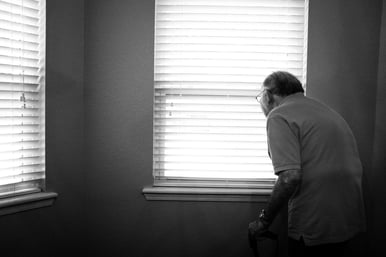Handicap-Accessible Homes
Designing an area that’s inviting and comfortable for everyone is a fulfilling experience. Decor options are limitless so long as they are pleasing to the eye and practical for the safety and convenience of all. Plush armchairs, beautiful storage chests and contemporary sofas can all work well in a handicap-accessible home.
Another Way of Looking at Design
Designing for people with disabilities requires considering decor from a new angle. As you think about a new floor plan and furniture for the living room, start by seeing the space from the perspective of everyone who needs to use it.
For example, determine the correct height for light switches, lamps, tables and drawers. People in wheelchairs prefer amenities slightly lower to the ground for ease of use, while those with mobility issues will want to keep lighting, remotes and other necessities all in one place.
Think about Flooring
To make your living room handicap-accessible, start from the bottom up. Using the same flat, smooth floor cover throughout makes it easier for people with disabilities get around the living room. Hardwood floors and laminate tile help wheelchairs roll easily. Mats, rugs or uneven carpeting may create problems for residents who have difficulty walking.
Less is More
Keeping your space free of clutter is another way to design an accessible living room. Wheelchairs and walkers require extra room to get around and pathways should be at least 32 inches wide. Arranging furniture in a manner that creates an open path helps everyone navigate the area.
A floor plan that uses empty space wisely is essential. For people in power wheelchairs, leave room within the seating arrangement to park a chair and include everyone in the conversation. Those with walkers or canes also need a place to leave these items when not in use yet still keep them handy for when they are needed again.
Finding the Right Furniture
Seating and Storage
Handicap-accessible homes often feature low, comfortable, easy-to-use sofas. Consider modern sectionals with an attached chaise lounge that have lots of room for special pillows or therapeutic assists. Wide, structured arms and firmer cushions create a strong foundation that helps with transitioning in and out of seating. Plenty of extra storage like an ottoman with a lift-top compartment will also help ensure the floor stays free of debris while conveniences like in-arm storage consoles keep small items like remotes, glasses and magazines handy.
Design and Stability
Sturdiness is vital for accessible home furniture. Shelves or cabinets that might tip easily if used for emergency support are not the best choice for this kind of space. Look for stable, well-built pieces with a low center of gravity and evenly distributed weight. Pieces that can fasten to the wall are another great option.
Power Recliners and Chairs
To design for people with mobility restrictions, try a motorized lift chair or power-assisted recliner chair. These pieces come in an array of colors and styles and can add comfort and style to a room.
Seek a Medical Opinion
There are many different types of disabilities, and not every suggestion for a handicap-accessible home fits each need. To get custom ideas for your situation, be sure to talk to a doctor or therapist.
Source: https://www.furniture.com


